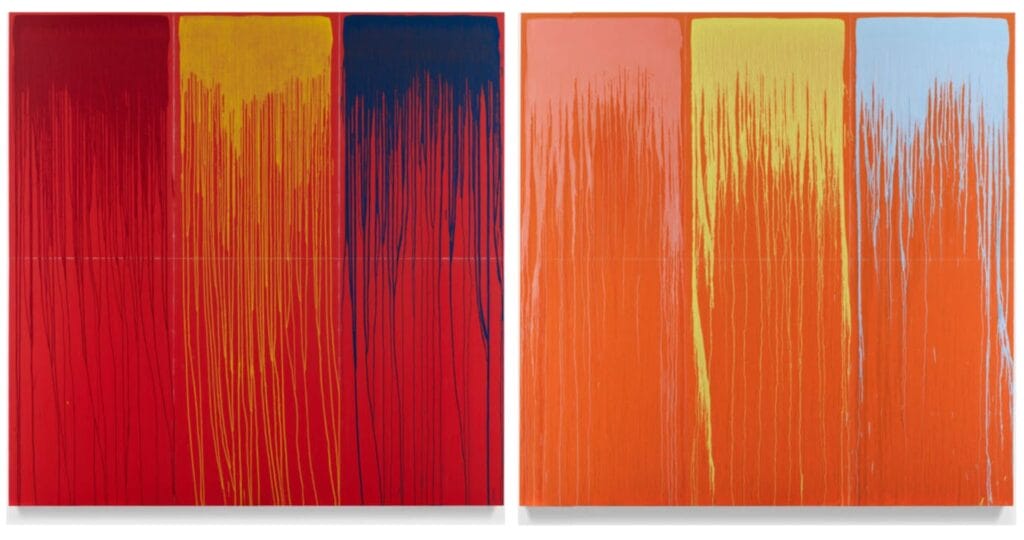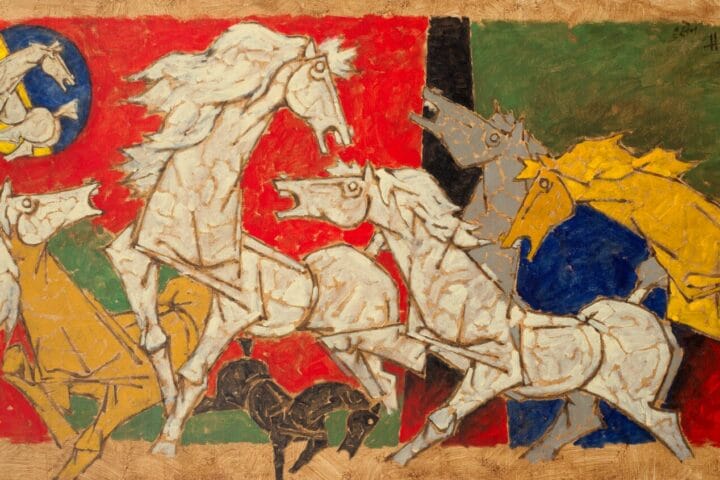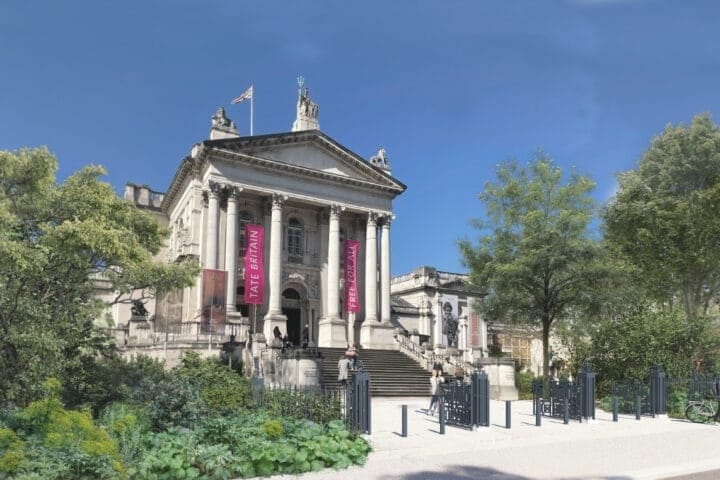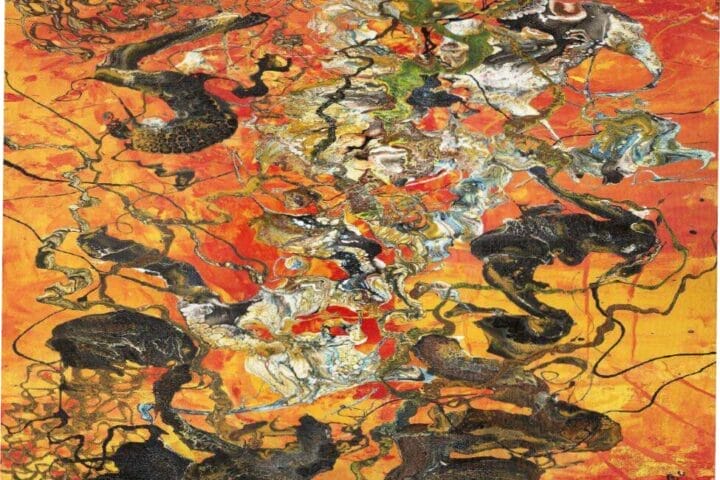
New York… Pat Steir’s first exhibition with Hauser & Wirth, and her first solo show in New York City since 2017, ‘Blue River and Rainbow Waterfalls’ will fill the entire ground floor of the gallery’s West Chelsea building with vibrant new paintings, including the artist’s largest and most daring single canvas to date and a brand-new body of large-scale works stemming from her iconic ‘Waterfall’ series first begun in 1988. Bringing abstraction and conceptualism together into a uniquely lyrical coexistence, Steir has spent more than five decades generating her visually arresting and intellectually rigorous oeuvre, expanding our understanding of the value of both control and chaos within art.
At 37 feet wide and 11 feet high, Steir’s breathtaking ‘Blue River’ is the first work visitors encounter in the gallery. The largest single painting on canvas the artist has ever created, it is comprised of an enormous and seemingly boundless veil of blue bordered by sheets of oscillating red and silver. This work evokes not only the fluidity of water and paint, but also the vastness of the universe and its unfathomable power. An immense, durational work, ‘Blue River’ seems to point toward the river of time. It envelops the viewer, inviting reflection and meditation, and creating space for thoughts and feelings to ebb and flow like the unpredictable currents.
Steir has said, ‘I paint water often, but don’t depict it; it is the paint itself that flows.’ This phenomenon is especially evident in Steir’s new series of ‘Rainbow Waterfalls,’ a radiantly colorful extension of the artist’s earlier black and white ‘Waterfall’ paintings. That acclaimed body of work was developed through the artist’s innovative technique of pouring, flinging and throwing paint onto canvas, embracing the inherent fluidity of the medium and utilizing gravity and chance to determine outcomes. In the latest incarnation of the series, Steir has replaced black and white with an investigation into primary colors––red, yellow and blue––producing a prismatic effect in pursuit of determining equal value and space for each pigment.
To create the ‘Rainbow Waterfalls,’ Steir first mapped out the basic compositions with chalk lines, establishing grids to guide where paint will land. While these faint white lines will mostly blow away over time, some remain faintly visible in the final works––a remnant of one of the few elements of order Steir maintains over the works. Echoing the Verdaccio underpainting technique made popular during the Italian Renaissance, her canvases are primed in green, enabling the background to impart a distinct glow from behind. Afterward, Steir’s chosen pigments take the lead––cascading down the surface, beckoned by gravity, with the full story of their journey only revealed in the edges of the canvas. Patient observation rewards the viewer: the more time is spent looking at the paintings, the more dramatic their differences and details appear.

Beginning 19 November, a series of public programs selected by the artist will take place in response to the exhibition and will include a reading by poet Anne Waldman, a screening from artist Joan Jonas and a performance of compositions by Steve Reich. For more information, including dates, times and how to rsvp, please visit hauserwirth.com/events
About the Artist
Born in Newark, New Jersey in 1938, Pat Steir is among the great innovators of contemporary painting. She first came to prominence in the late 1970s and early 1980s for her iconographic canvases and immersive wall drawings. By the late 1980s, her inventive approach to painting—the rigorous pouring technique seen in her Waterfall works, in which she harnessed the forces of gravity and gesture to achieve works of astonishing lyricism—attracted substantial critical acclaim. Informed by a deep engagement with art history and Eastern philosophy, and a passion for artistic advocacy in the both the visual and literary realms, Steir’s storied five-decade career continues to reach new heights through an intrepid commitment to material exploration and experimentation. As much as Steir’s process embraces chance, she retains complete command over the basic parameters. It is a harmonious collaboration between control and chaos, ‘chance within limitations.’ A remarkable synthesis of conceptualism, minimalism, and abstraction that challenges the postwar American canon, Steir’s practice remains limitless









